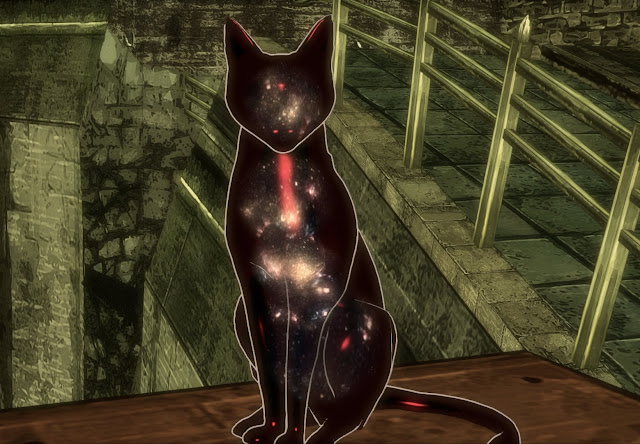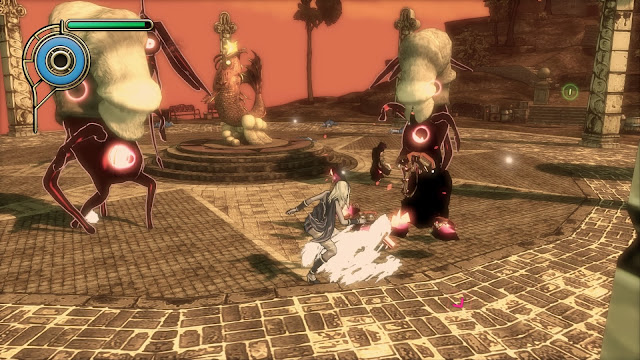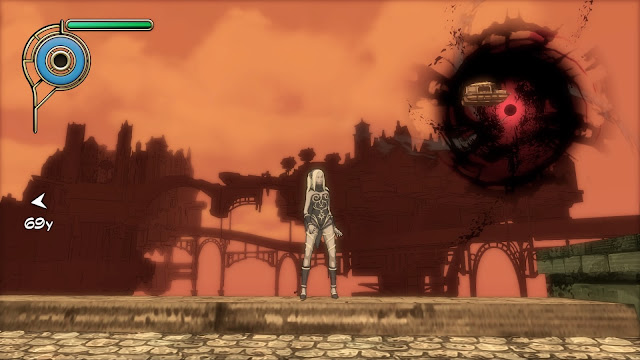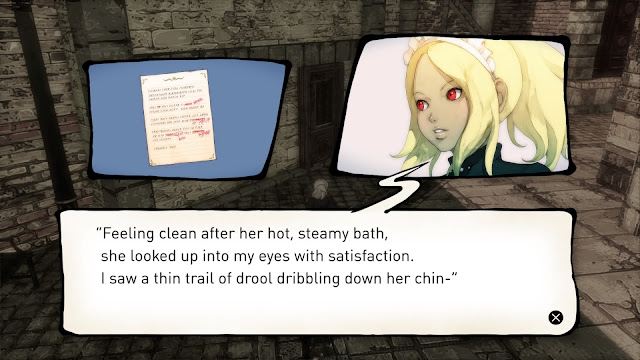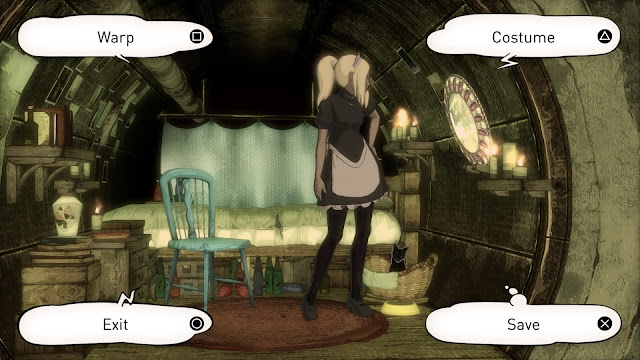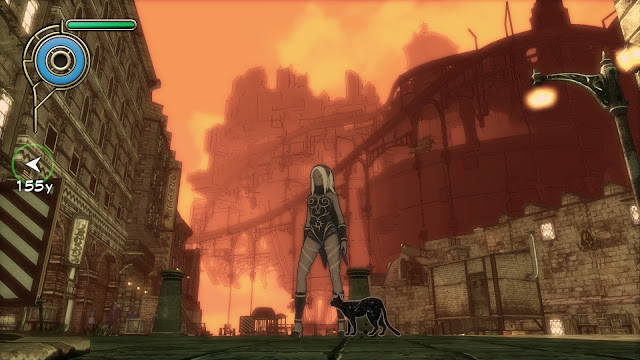Jean-Pierre Jeunet is one of my favourite film directors of all time. Ignoring his attempt to play in Hollywood with Aliens Resurrection (though nowhere near as bad as people would suggest that it is anyway), the French auteur’s body of work, from Delicatessen to The City Of Lost Children and Amelie, all share similar themes to one another. As downright surreal and “odd” as they can come, they all relate to us some very simple truths about the human condition, and do so while wrapped up in a distinct aesthetic that can only be called “French arthouse.”
Related reading: Matt’s review of the original Gravity Crush, from way back in 2012!
Why do I mention Jeunet here? Because I would like to think that if he were to direct a game, it would turn out a little like Gravity Rush. A woefully under appreciated game when it originally launched on the PlayStation Vita, I do hope the PlayStation 4 Remaster performs better, because we need more games – no, art – like this.
Gravity Rush tells us the story of Kat and her pet and ally, Dusty the cat. Kat is a almost childlike vision of innocence, naivety and goodwill; though she starts the adventure with complete insomnia and confusion about where she even is, she immediately finds herself selflessly leaping into danger in order to help a boy in trouble. But immediately we are clued in that this won’t be a story of pure happiness and heroics too, because when the boy is saved, his the father yells at Kat for not also saving their home. Kat is unsurprisingly hurt by the cynicism, gracelessness, and materialism that she experiences in her “waking moments”. Homeless, and without any direction in the world, Kat is left to forge her way forward by herself in a world that is hostile to her; and not just because of the monsters that she periodically encounters.
Still, she’s a resourceful sort, and sets up a home in a shut off storm drain. It was that moment that I became really attracted to her character; she started to fill her home with the junk left over by other people, and while the result looked somewhere between a horder’s nightmare and a haven for antiques, there was something genuine and touching about the way she really did make the space her own, and seemed so completely content with it.
On the one hand it showed her resourcefulness (and by the time she’s done, her space does indeed look quite cozy). On the other, it highlighted her indomitable spirit, which is a recurring personality quirk that we will see pop up again and again as she’s pulled in to jobs, missions, and dangerous environments without really knowing what’s going on, and yet she does so willingly because she wants answers, and on a more simple level to just help the people of the city.
As a character study, Gravity Rush is worth playing to experience Kat alone. Though dialogue and cut scenes are limited, what is there is more than enough to show off a deeply well-written and rich character. Kat has a sense of humour and an understanding of irony. She has the gentle touch we mentioned before. And, like a real cat, she has a sense of curiosity and wonder that can’t be sated.
Importantly, too, Kat’s a really, really good example of a really good female character. She’s adorably cute without ever being objectified, and subtly sexy without ever descending into gratuity. The game doesn’t deny her gender, and plays on it for comic effect from time to time – there’s one particular scene in a sub-mission where she’s tracking down pages of a book that has been lost, and mixed in those pages are what appears to be a trashy woman’s adult novel, which Kat finds absolutely fascinating until she discovers right at the end that it’s actually not what it seems and she’s disappointed by that. But the humour is never off colour, never explicit, and sits on the right side of gender representation. Kat’s not even the only important characters in Gravity Rush that is female, and, like Assassin’s Creed: Liberation and Beyond Good And Evil, this is indeed one of my favourite examples of a strong, empowered, and feminine-but-not-sexualised female lead in a game.
The city of Hekseville that Kat calls home is breaking apart as ‘gravity storms,’ which very much look like black holes, ominously swirl around the city, and periodically flare up to consume part of it – and the people with it. The city is crumbling within, too, with an tense atmosphere of inevitability and oppression manifesting itself in winding, claustrophobic streets. The wealthy enjoy their time in the skies in steampunk-style aircraft and live in mansions where they can bask in the sunlight. The poor fester away, forgotten, in the underground, where natural sunlight is an infrequent comfort.
Time is also used as a theme to emphasise the social dissonance between the wealthy and the poor. The gravity storms circling the city also work like black holes in that the closer you get to them, the slower time flows, relative to what those further away experience. While this doesn’t impact on the gameplay, it does mean that from a narrative point of view the destitute slug through lives on what seems like the most painfully slow rotting experience, while the lives of the wealthy seemingly blink by in a flash to those same people.
While this narrative theme isn’t explored in any great depth, what it does help to do is establish the faintly melancholic and nihilistic atmosphere that runs through Gravity Rush. While the warmly red-orange environments are generally welcoming to behold, and Kat herself is all kinds of lightly charming, there is nonetheless a sense of crushing oppression that bubbles away out of sight in this world.
To bring the comparison back to Jeunet’s City of Lost Children, which is a very dark film but touches on similar themes of innocence lost and forgotten on a societal level. Gravity Rush is far more bright, with some gorgeous vistas to admire that make it one of the most beautiful games we have on the PlayStation 4, in terms of art direction. It’s less transgressive in the way it works within fairy tale structures than Jeunet’s works, too. But the theme and tone of that film, and this game, are strikingly, eerily, similar in places. It’s hard to imagine the director of this game, Keiichiro Toyama, is not familiar The City Of Lost Children.
Supporting the deeply interesting narrative is an open world game that truly takes place in three dimensions. Thanks to Dusty the cat, Kat has the ability to manipulate gravity at will. She can create a circle around her that would stop gravity completely for a nearby object, allowing her to manipulate dumpsters like they were balls of paper. She also has the ability to propel herself high into the air – to literally leap over buildings and run along the inside of them as though they were solid ground to her.
It can become disorientating to use the gravity powers in some of the tighter places in the city, and the camera does struggle to keep up at times, but being provided with a whole suite of new perspectives to view the world more than makes up for that. There’s something intensely enjoyable about standing on the underside of a bridge and seeing buildings push downwards rather than upwards. It is a view on the world that we really don’t get to play with often at all. And, because the environment is a full 360 degree playground for Kat, it doesn’t matter as much that the raw square kilometres is quite small by the standards of open world games; being able to move along that extra axis really does help convey a sense of freedom and scale.
This gravity manipulation also works firmly into the game’s broader themes; the dreamlike quality of the world, coupled with the ability to do something that most people can only dream of, and with no ramifications to be concerned about from abusing that power, has been built into the game in a surrealist way to help create the game’s mystery. It’s downright weird that, when Kat reverses gravity, the people around her are also flung up into space, only to simply disappear from view as though they have winked out. Just how much of this world you can assume to be real is questionable until the mysteries start to unravel much later on.
The only disappointment with the way the game plays is the combat, which irritated me on the PlayStation Vita, and continues to do so here. Each enemy has a weak spot (or spots), and surviving combat simply involves hitting that weak spot over and over again, which is functional, but oddly disjointed when compared to the attention to detail and narrative depth elsewhere.
I also am not a fan of the sub-missions, which work really hard to be a textbook case of ludonarrative dissonance. After going to such an effort to create a dreamlike, breathtaking world to discover, why then put a challenge mission in that has players tasked with flying all over the place to try and get through gates as quickly as possible? For such an otherwise confident game, this bowing to the “need” to fill an open world with things to do, even at the expense of the narrative integrity, is irritating. Especially when it’s all but essential to actually do at least some of them, as they rewards that they give (gems) are important for upgrading Kat so that she’s powerful enough to take on the later challenges.
In addition to looking so natural and at home on the TV screen I can’t imagine ever playing this on the tiny Vita again, the Remaster comes with the original game’s various DLC, in order to get players fully up to speed with everything there is to know about Kat before Gravity Rush 2 lands later this year. For people who played the original game, but skipped the DLC, most of this extra content just helps flesh out Kat’s character a little more, while providing some (very, very light) fan service costumes to stick on the character. I’ve got to admit, the maid costume is so adorable that I couldn’t resist dressing Kat in that, and it was what she remained in for the rest of the game.
It’s been so long since the original Gravity Rush was released on the PlayStation Vita that it’s well worth players going back and experiencing it again. This here is a masterpiece of narrative storytelling, one of the strongest examples of game-as-art that we’ve had in years, and a remarkable, cinematic, triumph that has the rare distinction of also being a major studio project that is both creative and original.
And thank God (or perhaps that should be “thank Kat”, without getting too spoilery) that despite being a bomb on the PlayStation Vita, Sony saw enough strength in the material to give it another go. People, please, buy it. We need more of this kind of game, but publishers like Sony need revenue from them to make that happen.
– Matt S.
Editor-in-Chief
Find me on Twitter: @digitallydownld

